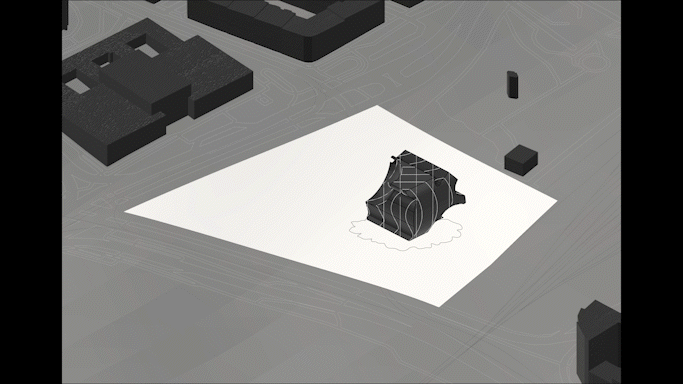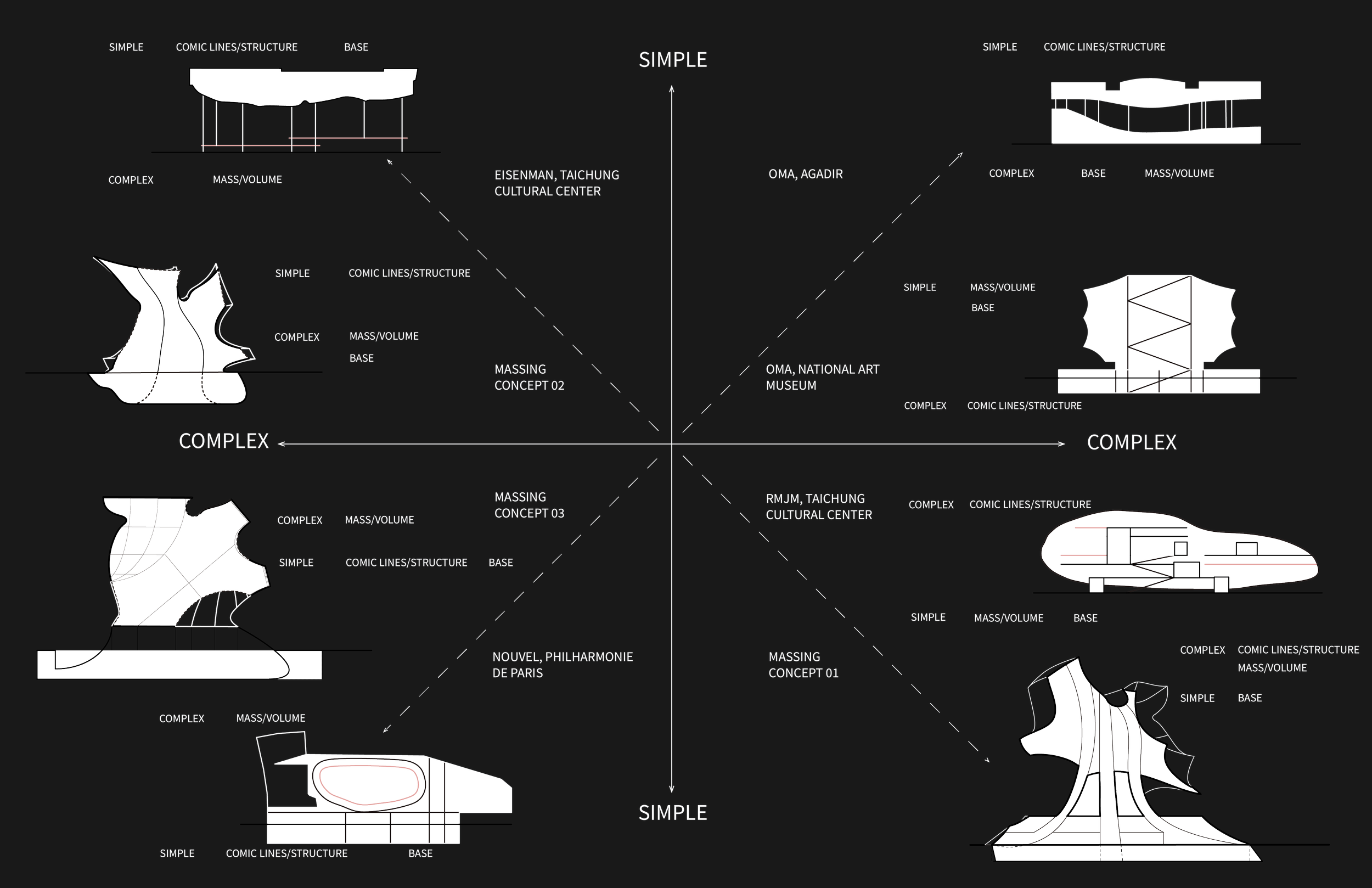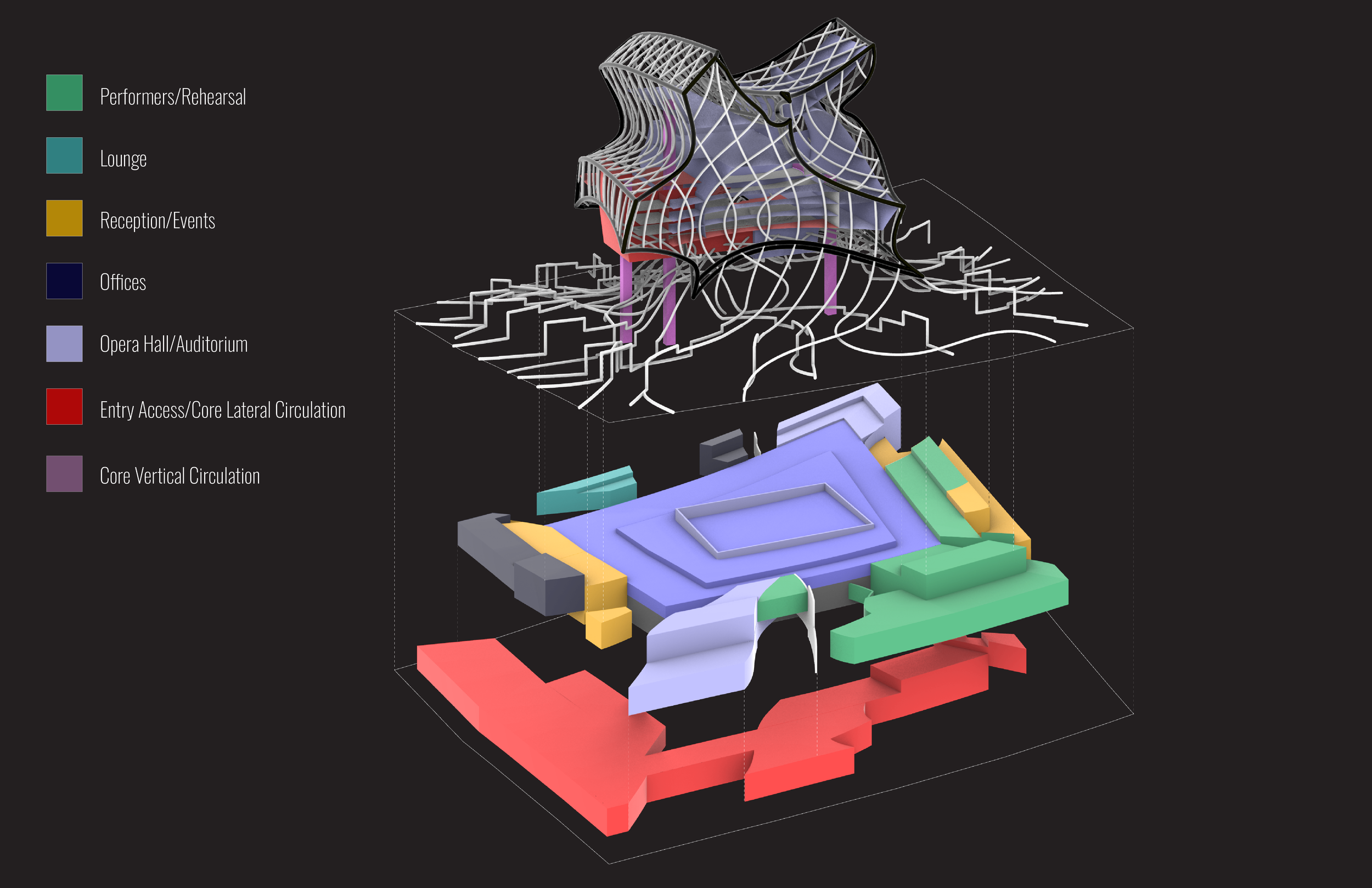5B | DEGREE PROJECT
INSTRUCTOR: CODY MINER
ARCH 431
IN BETWEEN THE SPLAT AND THE POP
In the world of cartoons, specific actions are emulated through discreet animation choices. Each frame is drawn to communicate fluid motion that we recognize and identify but would sometimes be impossible to exist in the physical world. A character in a cartoon world can be limitless, and if we think of architecture like being a character in a city, whose forms communicate motion through delineation, and personality with bulges, digits, and protrusions, then they can become very similar. Objects or bodies in frames, or on a site, may move through space and communicate animation at any moment, or a static position in a series of movements.
Translating aspects of the cartoon world to the world of architecture is the driving force behind my project: “In Between the Splat and the Pop.” In comics, motion lines (also known as movement lines, action lines, speed lines, or zip ribbons) are the abstract lines that appear behind a moving object or person, parallel to its direction of movement, to make it appear as if it is moving quickly. The splat can be characterized and translated to a physical form, whereas the pop can be articulated through these ‘comic lines’.
course description
Recent acts in architecture have engaged in a process known as compositional physics, these processes typically start with a set of intersecting boxes to be booleaned out or stacked piles of objects teetering on one another. Technological advances have allowed certain software to create an environment similar to our own in order to create abstraction. But while we shouldn’t overlook the leading practices partaking in the role of compositional physics, we can say these types of diagrams already existed playing on most Saturday mornings. Bob Somol once described the process of diagramming architecture as cartooning, and if this is true, architects take a physical form and translate them into lines and fills that are exaggerated yet made easy to understand. Architects can learn a lot from cartoons. While cartoons loosely base narratives in our own reality, there are physics and forms of vernacular that begin to exaggerate and embellish. In the world of cartoons, objects behave with their own trajectory, they bounce, punch holes in walls, scrunch like an accordion, or float in some cases. In this course we looked to build our own worlds and processes of architecture through cartooning, exploring structure, construction methods, form, ecology, and criticality.
Matrix-based diagram contrasting existing building’s complexity and simplicity in mass, relation to ground, and existence/implementation of ‘comic lines’ to my own initial massing concepts
Frame by frame diagram of GIF sequence
Program Diagram
Site Plan
Section
Plan
























